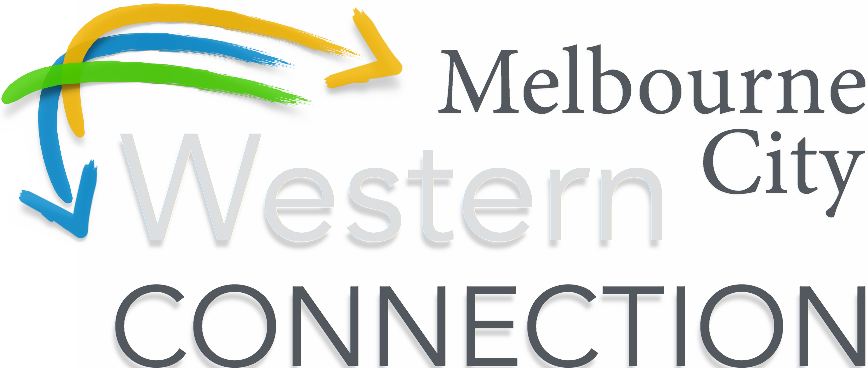Parks & Community Space
This is a map of parkland from the City of Melbourne Open Space Strategy. The orange circle represents an area 2-kilometres across. North Melbourne Train Station is at the centre of the circle. The green dot in the middle is Hawke St / Adderley St Park pictured at the top of this page... it is about the size of a basket ball court.
Melbourne has some the most beautiful parks and open spaces of any Australian city, and it is due largely to the vision of our first governor, Lieutenant General Charles La Trobe. In the mid-1800's when Melbourne was still in its infancy, La Trobe reserved the areas of land that we now know as Royal Park, Princes Park, Flagstaff Gardens, Royal Botanic Gardens, Fitzroy Gardens, Treasury Gardens, Domain Parklands, Fawkner Park and Carlton Gardens.
These parks and gardens bound the North, East and South of Melbourne City, but to the west there is a noticeable absence of large parkland. The reason for this is rather simple; in the mid-1850's, Docklands and neighbouring West Melbourne were industrial landscapes.
That is now changing. In recent years, Docklands has been transformed from a disused port into one of Australia's largest urban renewal projects. West Melbourne is also undergoing a major transformation, with old warehouses, industrial and commercial properties being converted into multi-story apartment buildings. It is predicated that in the next few years, the population of West Melbourne will increase at a rate faster than any other Melbourne suburb.
While the population of these areas might be increasing at a dramatic rate though, the actual area of parkland in these former industrial areas remains minimal.
City of Melbourne's Proposed Parkland
This illustration is from the City of Melbourne Open Space Strategy. It shows the location of proposed Capital City Parkland for the E-Gate site.
The City of Melbourne Council is well aware of the significant lack of parkland and open space in the west of the city. In the City of Melbourne Open Spaces Strategy (2013) there is an outline of proposed parkland for West Melbourne, including a "Capital City Open Space" to be located at the western boundary of the proposed E-Gate development site.
This Capital City open space has been selected because it lies on a flood plain for Moonee Ponds Creek which lies beneath the City Link tollway. While it seems rather prudent to use this land though, there are also problems too. This land is not central to most residents in Dockland and West Melbourne. It stands to become a destination in its own right.
Placing large parks beneath CityLink and next to Moonee Ponds Creek is a cheap option for council and state government, but for most people, these parks will be a destination in their own right. Rather than parkland that while break up the monotony of the urban landscape, this parkland is more likely to simply be seen as a beautification process for the urban edge.

